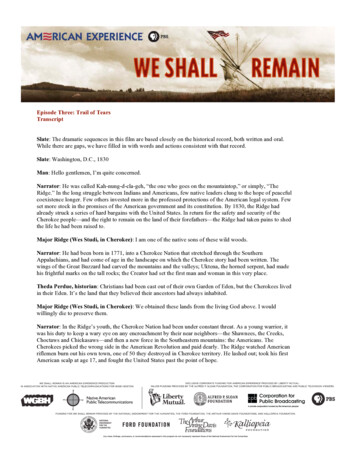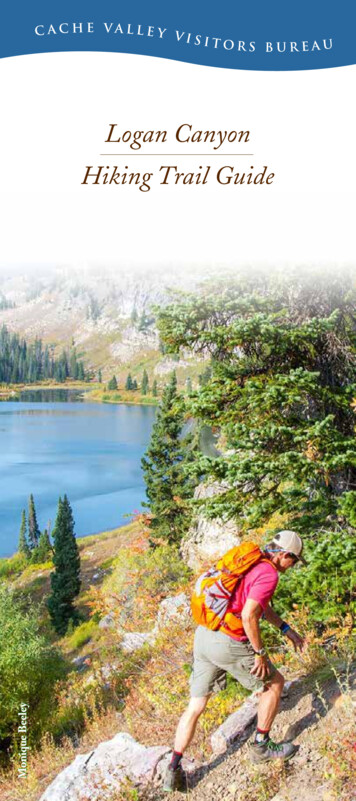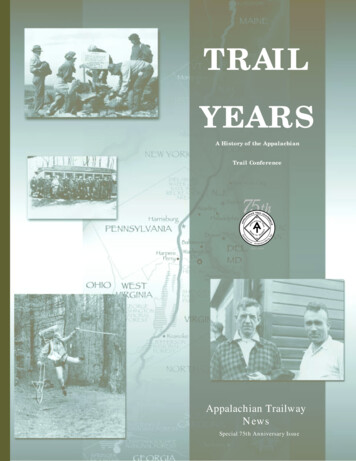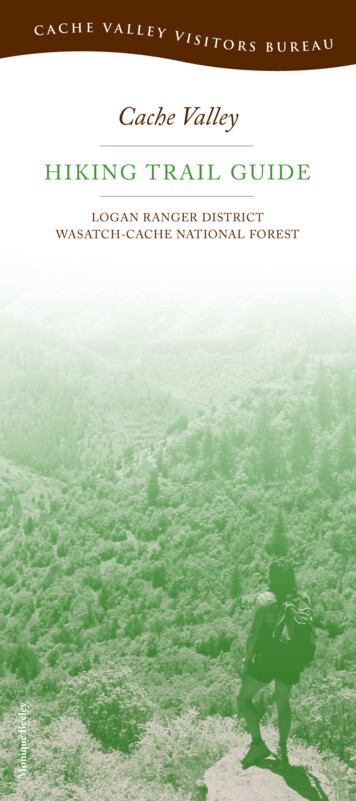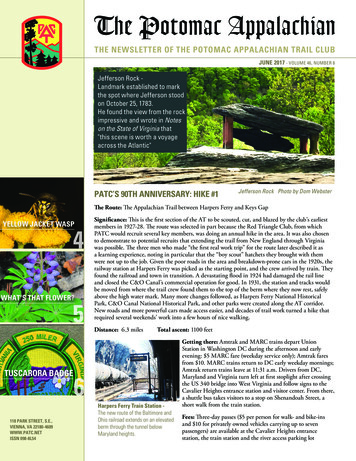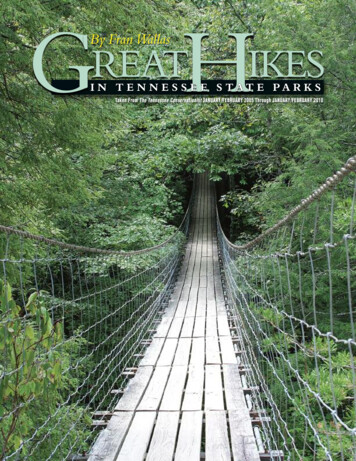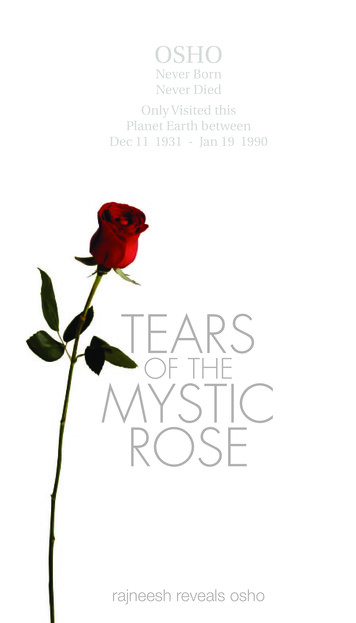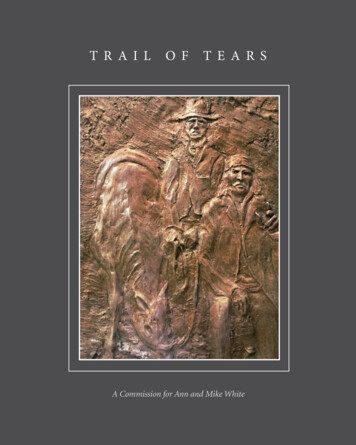
Transcription
T R A I LO FT E A R SA Commission for Ann and Mike White
This was the original concept sketch shown to Mike White. Notice the beginningof suggested colors for the patina shown on the right margin.The name “Trail of Tears” came from the brutal removal of the Cherokee Nation fromhomes in the mountains of the Blue Ridge and Great Smokies into the poor lands ofOklahoma, around Tulsa. The year was 1838. The President, Andrew Jackson. Morethan 13,000 Indians, many women and children, made the hard crossing which wasnearly 1,000 miles over a period of three and a half months. Groups of 1,000 were sent ondifferent trails. Many died, estimates up to 4,000.The purpose of this commission is to tell their story in bronze.
1The Cherokee Nationestablished substantial farms anddwelling houses. The colors ofthis bronze reflect the transitionfrom the lush blues and greensof the Great Smokies and BlueRidge mountains, to the sandysameness of the reservation inTahlequah, Oklahoma.122354Scouts would select campsites forthe night, usually along streamsor rivers. Shown here is such a site,with an array of wagons, tents, andother make-shift shelters.673The most common methodof travel was on foot. Therewas an assortment ofwagons, some provided bythe government at greatexpense (sound familiar?)and there were mules,horses, oxen, and four dogs(can you find them?)
64This particular group was accompaniedby horse soldiers. It may have been theonly one so policed. All groups werecontrolled by Cherokee elders. Thisgroup was patrolled because of the highnumber of deserters.The overland trek was a killer. Anolder woman has fallen and is beinghelped by fellow travelers.75Also shown is an Indian womanhauling family possessions on amakeshift sled.On the plains, there is a funeral.It was painful for the Cherokee toleave their loved ones in a grave in aforeign land. Usually the burial siteswere marked by a simple flag. Thereis a movement underway to markthese burial sites properly.
8Not immune from death were theanimals. Shown here is a downedhorse with its master trying invain to revive it.10Travelers were in all sorts of wear and headgear.I initially sketched the different possibilities ofattire. This group certainly illustrates the point.98101114131215
1114True story. A family carried its prized upright pianothe 1,000 miles to Oklahoma. Seen here, the wagoncarrying the piano is ascending a rise thanks to thefervor of a mule skinner and his horses.12A group of three elders stop for asmoke and a chat. Probably asking,“What are we doing here?”Mother and son are seen wavingto a young girl. Is it a daughterwho has become separated?1513Grandma sits astride the burro tendingher grandchildren. Of course, there is theever-present dog.Most groups were led by aCherokee elder who was the trailboss. Here he is giving instructionsto his scout about the journey ahead.
ABOUT THE SCULPTORTRAIL OF TEARS MAPSince his early years growing up in a small SouthCarolina town, Tom Player had a passion for art.He studied with Martin Dawe at CherryLionStudio in Atlanta and in Italy under RobertBodem Director of Sculpture at the FlorenceAcademy of Art. He has worked with well knownsculptors Kathleen Friedenberg, Carter Jones,John Sisko, Sandy Scott, Eugene Daub, JaniceMauro, Alicia Ponzio and Sergey Eylanbekov.Player has exhibited works at the Bascom ArtCenter in Highlands, N.C, most recently inAmerican Art Today: Figures, and in theInstructors Exhibit there. He has enjoyed anumber of one-man shows.An elected Fellow in the Hambidge ArtistResidency Program, he won the Kathryn ThayerHobson Memorial Award(2013) and the LeilaGardin Sawyer Memorial Award(2015) given by the American Artists Professional League at theSalmagundi Club, is a member of the Portrait Society of America, American Medallic SculptureAssociation, and is an associate member of the National Sculpture Society, where his works havebeen shown.He has public works displayed in the Armor Museum, Ft. Benning, GA; Furman University, AtlantaFinancial Center and, Grace Episcopal Cathedral, Charleston, S.C.Email - tom@playerbronze.com, Phone - (404) 307-8613Visit - www.playerbronze.comMy appreciation is extended to Dr. Duane H. King, Director, Helmerich Center, GilcreaseMuseum in Tulsa, Oklahoma, for his invaluable advice and insight. Many think Dr. Kingis the foremost authority on the “Trail of Tears.”
to a young girl. Is it a daughter who has become separated? Most groups were led by a Cherokee elder who was the trail boss. Here he is giving instructions to his scout about the journey ahead. True story. A family carried its prized upright piano the 1,000 miles to Oklahoma. Seen here, the w
